The origins of cinema can be traced back to the 1800s with Thomas Edison‘s invention of the kinetoscope, which allowed one person at a time to view a moving picture. Audiences grew and so did filmmaking technology with the introduction of the “silent” movie in the 1920s, back when stars like Clara Bow first graced the silver screen. Bow was the rare performer to successfully make the transition to “talkies” in the 1930s, and she maintained her stardom all the way through the 1950s. In those days, Hollywood was like the wild west, with no rules or regulations to govern their stories and dialogue, which gave way to plenty of scandals both on and off camera.
In the epic new film Babylon, Director Damien Chazelle unapologetically explores the grotesque behavior and debauchery of numerous Hollywood stars as well as the crew, below-the-line players, and studio executives before they were slapped on the wrist by the Hays Code (Motion Production Code) to keep the sinful indulgences and rudeness in check.
Makeup and hair were an especially ambitious undertaking and they played a huge role in telling the story of Babylon, which featured more than 150 cast members and hundreds of background actors, including seven primary performers — Brad Pitt, Margot Robbie, and Diego Calva, as well as Li Jun Li, Jovan Adepo, Jean Smart, and Tobey Maguire — who kept hair department head Jaime Leigh McIntosh (Blonde) and makeup department head Heba Thorisdottir (Don’t Worry Darling) extremely busy and on their toes due to an abundance of touch-ups. Thorisdottir is no stranger to either Pitt or Robbie, having previously worked with them separately on Inglourious Basterds and The Suicide Squad, as well as together on Once Upon a Time in Hollywood.
Below the Line recently spoke with McIntosh while she was in production in Prague, and Thorisdottir, who checked in via Zoom from Los Angeles and was on her way to the Babylon premiere. Having worked together before, they were on the same page when it came to discussing the relentless schedule of getting both the principals and the background cast/dancers ready for their close-ups. The two of them worked very closely with Chazelle to achieve just the right looks to illustrate his vision for the wild and crazy characters and the world they inhabit.
For Robbie, they referenced Clara Bow along with a famous female rock star, and McIntosh talked about the inspiration for the different hairstyles, given that the movie takes place over several decades. Meanwhile, Thorisdottir reveals the makeup techniques used in the film’s big party scene, right down to tattoo coverage. They also discussed the many movie-within-a-movie scenes which required far more sweat than lipstick and glamour.
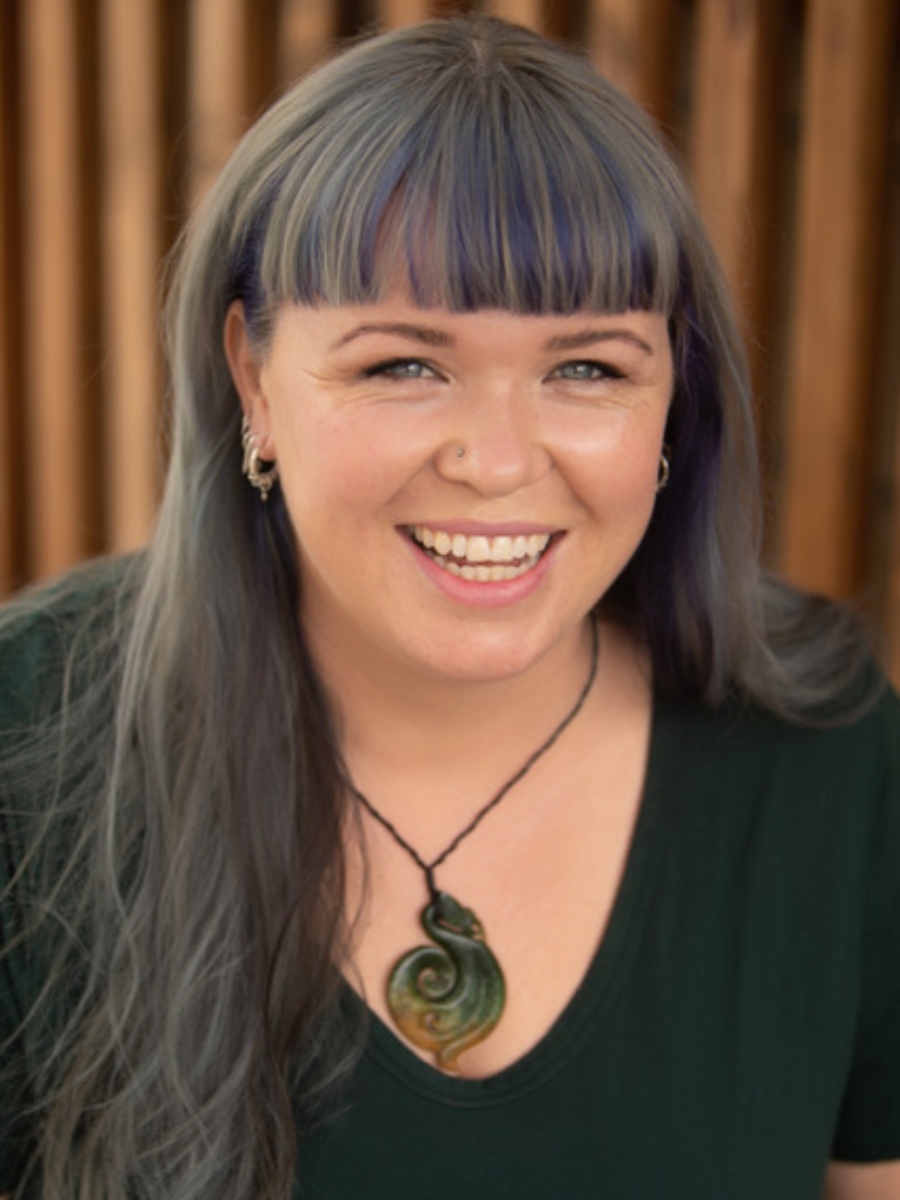
Below the Line: How would you describe navigating your day on this film with so many cast members to work on?
Jaime Leigh McIntosh: Starting with our mornings, we would always be heavily scheduled because we had so many cast members to get through. And also, in the crowd room in the background, they had so many people that they needed to get through. You only have so much time to get everybody ready and get them to work on time, so most mornings were pretty busy. Then you would get through some massive scenes and you’d be like, ‘Yeah, we did it.’ In most movies, you have a little downtime and then it gets busy again. But this was just day after day. It was just like, ‘Okay, we got that party shot; now we’re going to move on to the next one.’ [laughs] It was relentless but in a really exciting way.
BTL: There is a huge party scene early on that illustrates the large number of people you had to work on from a hair and makeup perspective.
Heba Thorisdottir: We had, I think, anywhere between 25 and 30 makeup artists. There was makeup anywhere from clown makeup to Studio 54 to the ’20s. If you were to see this party scene without any makeup, everybody would be covered in tattoos. I think the biggest makeup budget on the movie was for the tattoo cover for that particular scene. Because the film is set at a carnival, we had clowns, and it wasn’t just clown makeup; it was a “distressed clown,” as if they’d been partying there for hours. It wasn’t like we could take any of these 300 people and say, ‘Come camera ready,’ like we can do with a lot of other films. So every single person, like, everybody’s teeth, were kind of knocked down, like, the sheen on them — including Margot Robbie’s. There were no shiny teeth. So it was just tremendous work, and I think we shot [that] for, like, 13 days. The continuity was tremendous.
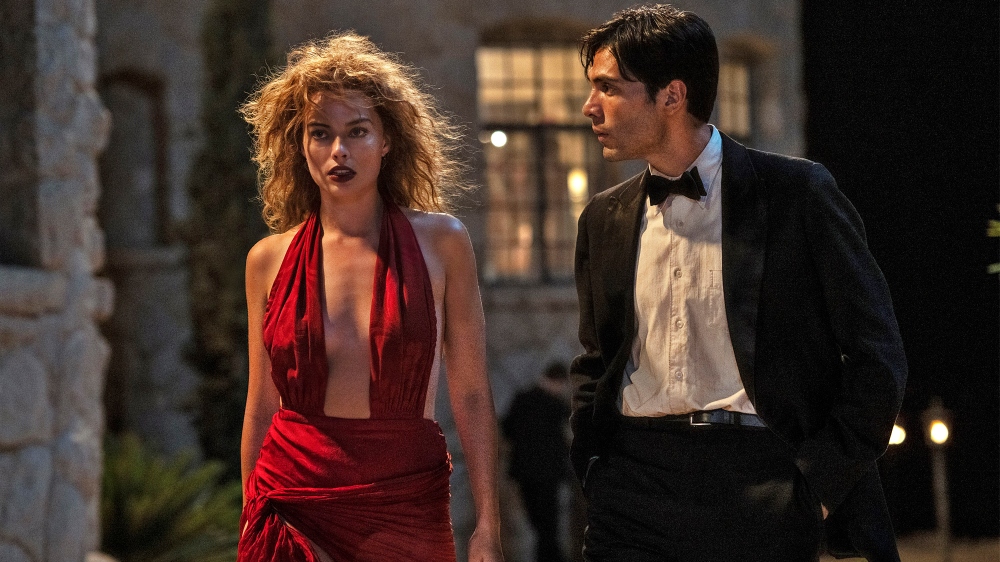
BTL: That’s a lot of organization. Jamie, speaking of the 1920s, what was your research into that era like?
McIntosh: As far as research goes, I think we had to probably do more research and dig deeper into it than we normally would for a 1920s film because Damien wanted to just demolish the expectations of a period piece. So we needed to find all those reference images and footage of things that people aren’t used to seeing and don’t necessarily relate to the ’20s. It wasn’t just ‘yeah, I know what the ’20s look like.’ It was finger waves and bobs, and that’s what we’ll do. So the research process was also very long because the film had been delayed because of COVID. We were able to kind of go back and forth for quite a long period of time, which was awesome. Between Heba, Damien, and myself, we had an insane collection of reference images to kind of pick from.
For a scene like the party scene, that was incredibly helpful because every single background artist, dancer, and musician had been styled. It had been well thought out. They’d gone for a fitting, we’d seen what the costume was, and it was pulling from those references what crazy and wonderful things we could do with them. For Li Jun Li, as Lady Fay, she has the top hat, so we wanted to kind of really get rid of a lot of her hair and just kind of pop it to the back and do a kind of flat bun to get rid of it. But I was just like, ‘Oh, that’s just so dull; I need some little bit of jazz to happen somewhere.’ I just love the idea that she was wearing a tuxedo and a top hat and that it had an androgynous feel to it, so let’s put something there that could represent sideburns but is super cute. So we just went with the gorgeous little kiss curls.
BTL: What were some of Damien’s other requirements, so to speak?
McIntosh: Damien had kind of given Costume Designers Mary Zophres, Heba, and myself this list of, ‘I want to see somebody painted gold; I want to see a person dressed like this.’ He also had a list of specific characters he hoped to see spotted at this party. And then you’d get to set, and he’d remember that list and ask, ‘So where’s my guy painted gold?’ What he can keep in his mind is staggering. It was such an awesome collaboration to get that whole thing to come together.
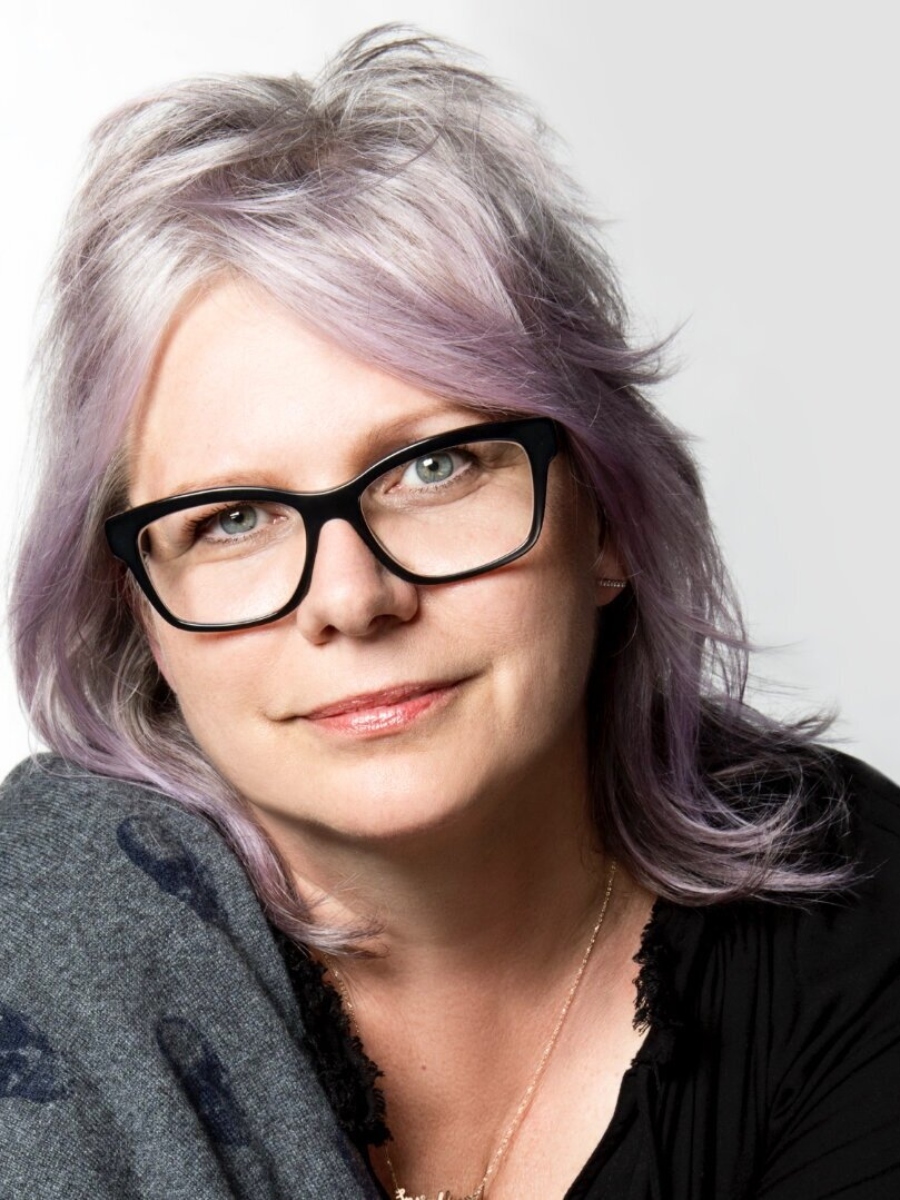
BTL: Let’s talk about the principals, starting with Margot Robbie, and how you created her looks as the character Nellie LaRoy.
Thorisdottir: With Margot, Damien was very specific that he didn’t want a typical ’20s look. We had to dig a lot deeper and found this mugshot book from the ’20s and ’30s, where we took a lot of inspiration. It started as our research bible, and there were a lot of women there who were poor. They don’t own tweezers, they don’t do their makeup like the movie stars, and they don’t look like movie stars. That’s what the studios then made you look like, so he wanted to be very specific about that.
In the scene in her house, where they lived basically like rats, they don’t have anything, and it’s a mess. He wanted to really show that in the makeup and the hair. So we start the movie with her coming to the party. Mary Zophres was like, ‘Yeah, she has, like, hot pants and a scarf that she makes into a dress, and she borrows lipstick from somebody.’ So we purposely don’t touch up her lips throughout the party because they have to fade, and she doesn’t own the lipstick or even have a purse. She doesn’t have anything to touch up, she just goes and has a blast.
BTL: How does her look change when she goes in front of the camera and becomes a silent film star?
Thorisdottir: Damien was very specific with that. When it came to her premiere, [for] both Li Jun Li (as Lady Fay Zhu) and Margot, we used really dark lips a couple of times in the film because we wanted to be kind of thinking like you’re looking at a black and white [film]. However, the inspiration was simply the era. Obviously, we looked at movies, photos, and everything else about Clara Bow. We did find some photos where she looked like this; let’s kind of do that. But basically, she’s just wild-looking.
McIntosh: She starts with a wild mane, and I suppose we did a lot of testing to find her hero look. We tried everything from micro bangs to super short bobs, such as cheekbone-length bobs, to long, wavy looks. Damien seemed to be going back and forth, back and forth — ‘I like the long, but I prefer the short.’ We figured for her studio makeover, she’d get the hair cut off, and we see it in those rigid, structured kinds of finger waves for that one party, and then she goes back to the wild texture, and we see Nellie, the wild child, come through. Damien and I were passing back and forth a plethora of reference images ranging from the period to the contemporary.
A lot of Janis Joplin kept coming through, kind of like her performing live on stage and throwing her hair around. He knew the entire dance routine and the scenarios that Nellie LaRoy would be in, as well as how the hair would play a role in them. Once we got that look sorted out, we had wigs made so that Margot would be comfortable in them and she could wear them as her own, fling them around, get her hands in there, and it would all still read as her head of hair. It was a lot of fun. Damien wished for her to have a sense of freedom and wildness. She definitely rocks up, and she’s got that hair going, so it was a good choice.
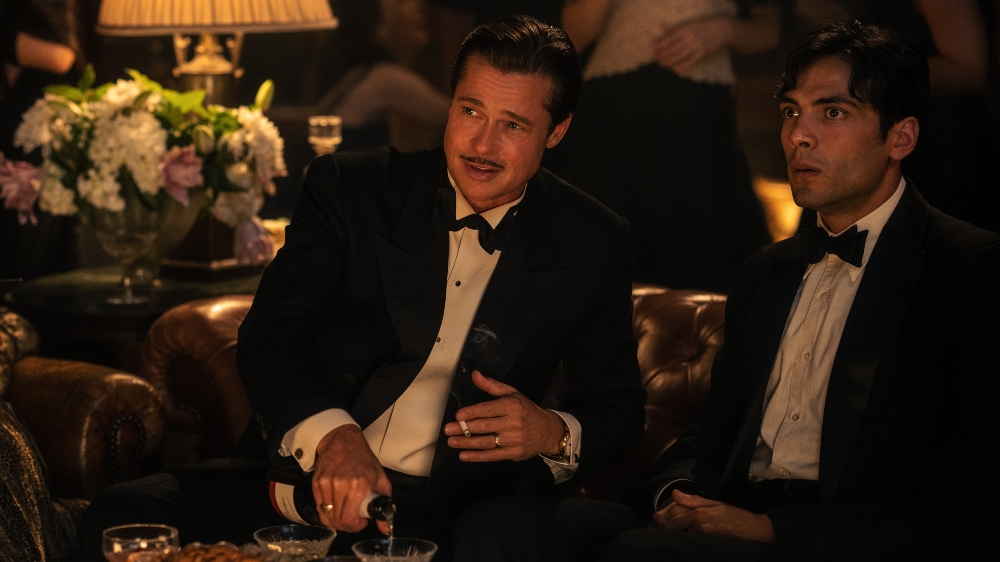
BTL: Who had the privilege of giving Brad Pitt that Clark Gable look as movie star Jack Conrad?
McIntosh: I did Brad’s hair, and his longtime makeup artist, Jean Black, took care of his makeup. By the time I spoke to him, I think he and Jean had already talked about him going darker with his hair color and just wanting it to be very timeless and classic. He wanted to be that classic movie star, but we didn’t want to use anything in his hair that was too rigid, so when he does move around or gets crazy when he comes home from partying and stuff, his hair can kind of flop down and move around. I think he was the only character Damien was okay with having a mustache like that, like a real kind of period mustache, because once he saw it, he was like, ‘Oh yeah, that looks good.’ [laughs]
Thorisdottir: Jean Black designed the pencil-thin mustache. It was all her, Damien, and Brad’s discussion. I don’t know where it came from, but that definitely existed back then.
BTL: Would you agree that Jean Smart’s reporter character Elinor St. John was the most glamorous?
Thorisdottir: She’s just stunning inside and out, that woman. I gave guidance on her makeup, but it was done by a makeup artist who worked under me, Jeong-Hwa Fonkalsrud. I kind of gave her the character breakdown, saying that she is sort of the anchor in the story and there’s not really any continuity in her character because we don’t really follow her home or anything. She just pops up at parties in the most amazing costumes, and that kind of sets it off with her red hair color. We kind of just went with that. But she’s fantastic, and it’s rare to get to work on a film where makeup and hair play such an important role in telling the story [of] all of the characters. Back to Nellie… I’ve never had such a front-and-center character that we could really tell the story with the makeup when she’s in front of the camera, when she’s behind the camera, and how the makeup just kind of moves the story along.
BTL: During the movie-within-the-movie scenes, I’m picturing Damien saying, “more dirt, more sweat!”
Thorisdottir: [Laughter] There’s always more with the sweat. In our first test, he was like, ‘When you think you have done enough sweat and dirt, go like 100 times more!’ He’s like, ‘I wanna see it drip.’ I want to see them wet and sweating. And I was like, ‘Okay!’ So we had worked up quite a sweat, and then he exclaimed, ‘More, more!’ There are several different ways to do it, depending on what you’re doing. He wanted so much of it that we just wet it with water. We put some stuff and a kind of sheen on the actors, but then we were just bridging with water because if we had done the sweat with glycerine in it, that would just be in the actor’s eyes, so we only used water. We would prep the skin and do things to the skin, but what we actually sprayed on them was just water. For the dirt, we used makeup dirt. It’s a powdery dirt that we mixed with some adhesive because the sweat was making it difficult to keep the dirt in place.
McIntosh: We had multiple levels of sweat that we needed to do on Margot when she was doing her first film, where the fighting happens and she can’t hit her mark. We’d go from dry to, like, the sweatiest of sweat, and then we’d have to go back to, like, mid-dry, half-sweaty, all that type of stuff. It was just like, ‘What sweat level are we at?’ Heba and I were hiding outside the door every five seconds.
Thorisdottir: We were practically in the scene because we couldn’t walk away because there wasn’t enough time. She would just come out for that beginning shot where Damien wanted her to start dripping sweat on her script, and he wouldn’t shoot it in continuity. He would go, like, ‘Okay, now we are on stage seven of sweat.’ And then she would come back in, and we would stand up really fast to reset her hair and makeup, and he was like, ‘Okay, now back to the beginning.’ Then he wanted stage eight of sweat. So it was just crazy keeping track of that.
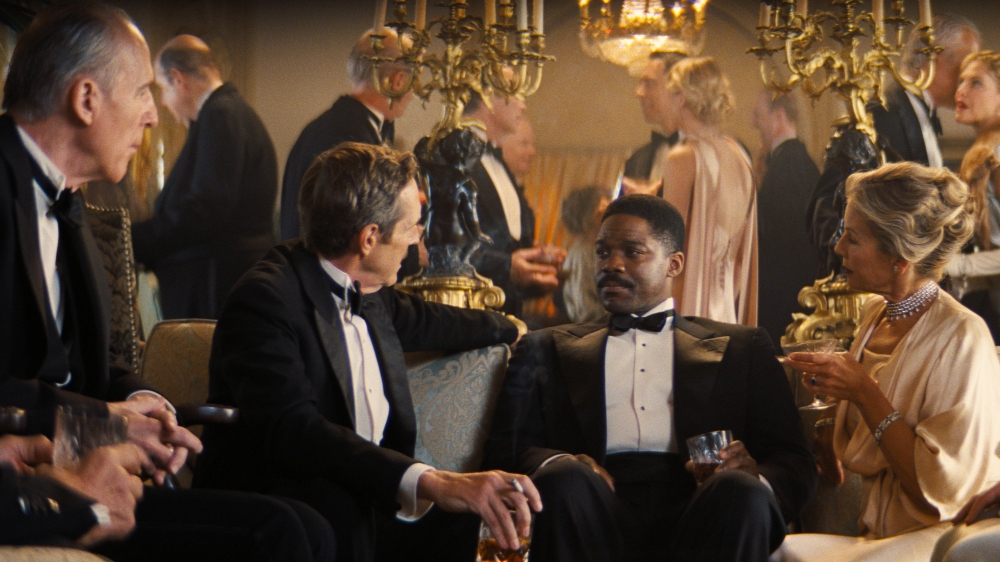
BTL: There is a scene where Sidney Palmer (Jovan Adepo) has to blacken his face. What do we see him use to accomplish that?
Thorisdottir: That was actually real cork — burned cork that was used back in the day — that we ordered from eBay. We worked with props, and they ordered some. We had several of them, and one went home with him for him to practice. I think that must be the most emotional scene I have ever done or will ever do. For Jovan, he reads the scene, and obviously, I assume he discussed it with Damien before, but what you don’t think about is shooting for, like, two or three days, so he had to just keep doing it and keep staying in that emotional space, and it was just heartbreaking.
BTL: What would each of you say was most challenging?
McIntosh: Overall, my biggest challenge was just getting out of the cliched 1920s. That balance is tricky because you want to be period-correct, but you also need to find the space, the place, and the styles that are going to work for each person. If the costume was more ’20s, then maybe you’d pull back on the hair, or if the costume wasn’t overly ’20s, maybe I could amp up the ’20s hair a little bit more. Once I had that in mind, I also tried to communicate that to an entire team of people. It’s something that you haven’t seen in a 1920s period piece before. I think that was an ongoing challenge that was very enjoyable.
Thorisdottir: What wasn’t challenging? [laughs] This movie started with 550 extras, and overall we had over 250 speaking roles and hundreds of background actors, and it just never let up. It just got huge. We didn’t just have a movie-within-a-movie. We had a movie within a movie because a lot of it was shot on an old camera in black and white. We finished the first day and it was just like, ‘Oh yeah,’ and then ‘and then tomorrow…’ and it never stopped. It’s definitely the biggest, boldest thing I’ve ever encountered. That was the exciting part, too, because they don’t really make a lot of movies like this anymore, shot on film with real backgrounds and no CGI except for an elephant. It’s all practical and present. It’s an incredible experience to be a part of.
BTL: This film really gave you the opportunity to experience both the grotesque side of Hollywood and the glamour.
McIntosh: I loved it. I mean, you’re reading the script, and the first eye-popping thing happens, and you’re like, ‘Oh, I’m hooked. I’ve got to keep reading this. This is amazing.’ And then the more you keep reading, the more you’re like, ‘oh my goodness, oh my goodness. I can’t wait to see this movie. I need to work on this movie. I love being confronted by stuff when I watch films. I want to think about it for days afterward. So, for me, that was exciting to think that I could get to work on something like that. The variety in your work week is incredible because you go from perfect little rich people hairdos to them being vomited on. [laughs] It makes for a very entertaining line of work.
Thorisdottir: I think it was very exciting, and it was like every day was a new day. On a lot of films, you have, like, one makeup look that you are concerned about, and you have maybe three months to perfect it. You’re always tweaking a little bit. And in this, there’s so much movement, there’s so much makeup, it’s so outside of the box, and everybody just kills it every single day in creating something new.
Babylon is now playing in theaters nationwide courtesy of Paramount Pictures.





